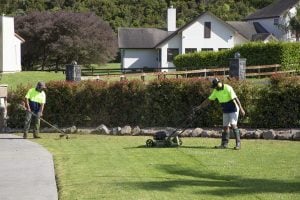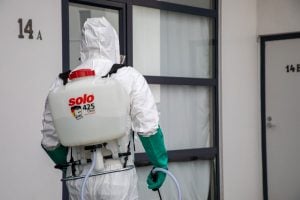In the world of property management, being prepared for emergency repairs is not just about fixing unexpected issues quickly; it’s about safeguarding your property’s value, ensuring the safety of occupants, and maintaining your property’s curb appeal. This guide explores the essential strategies for effectively handling emergency repairs, ensuring your commercial property remains attractive, safe, and functional, even in the face of unforeseen challenges.
Understanding the Importance of Emergency Preparedness
Emergency repairs can range from minor issues to major crises that threaten the structural integrity and safety of your property. Being prepared minimises the impact of these emergencies, reducing downtime, costs, and stress for both property managers and tenants.
Benefits of Being Prepared
Identifying Common Emergency Repairs
Recognising potential emergencies before they occur can significantly enhance your preparedness. Common issues include:
- Plumbing Failures: Burst pipes, severe leaks, or blocked drains.
- Electrical Hazards: Power outages, exposed wiring, or electrical fires.
- Structural Damage: Compromised building integrity due to natural disasters, accidents, or wear and tear.
- Security Breaches: Vandalism, break-ins, or security system failures.
Routine Maintenance Strategies
Consistent upkeep is crucial to ensure that your landscaping remains attractive and functional throughout the year.
Seasonal Maintenance
- Spring: Focus on cleaning up debris, pruning, and preparing beds for planting.
- Summer: Prioritise watering, weeding, and monitoring plant health during warmer months.
- Autumn: Prepare for winter by aerating lawns, planting bulbs, and applying mulch.
- Winter: Protect plants from frost, and maintain pathways and parking lots clear of ice and snow.
Sustainable Practices
- Water Conservation: Implement irrigation systems that reduce water waste, such as drip irrigation and timed sprinklers.
- Eco-friendly Pest Management: Opt for natural pest control methods and organic treatments to minimise chemical use.
Planning and Prevention
A proactive approach to maintenance can prevent many emergencies. Regular inspections and maintenance schedules are crucial.
Creating an Emergency Response Plan
- Assessment: Conduct regular audits of your property to identify vulnerabilities.
- Team: Assemble a response team with clear roles and responsibilities.
- Resources: Ensure access to necessary tools, equipment, and emergency contacts.
- Communication: Develop a communication plan to inform tenants and staff during emergencies.
Building a Network of Trusted Contractors
Having a reliable network of professionals ready to respond to emergencies is invaluable. Vet contractors based on their expertise, response time, and track record.
Implementing Preventative Maintenance
Routine maintenance is your first line of defence against emergencies.
- Regular Checks: Schedule frequent inspections of critical systems like plumbing, electrical, and HVAC.
- Seasonal Preparedness: Tailor your maintenance efforts to address seasonal challenges, such as freezing pipes in winter or storm damage in summer.
- Tenant Education: Educate tenants on how to prevent common issues and whom to contact in case of an emergency.
Responding to Emergencies
When emergencies occur, having a clear, efficient response strategy is crucial.
Immediate Actions
- Safety First: Ensure the safety of all occupants.
- Assess and Act: Quickly assess the situation and take immediate action to mitigate damage.
- Professional Help: Contact the appropriate professionals to handle repairs.
Documentation
Document all incidents thoroughly for insurance claims and future reference. Include photographs, repair bills, and detailed reports of the incident and response.
Case Study: A Swift Response to an Unexpected Flood
Illustrate the effectiveness of a well-prepared emergency plan with a real-life example. Highlight the quick actions taken, the importance of having established relationships with contractors, and the lessons learned.
Incorporating Technology in Emergency Repairs
Leverage technology to enhance your emergency preparedness and response. Use property management software for real-time monitoring, automated alerts, and streamlined communication.
Preparing for emergency repairs is a crucial aspect of property management that requires diligence, foresight, and a proactive mindset. By understanding common emergencies, creating a comprehensive response plan, and implementing preventative maintenance, property managers can ensure their commercial properties remain safe, attractive, and well-maintained. Remember, the goal is not just to react to emergencies but to anticipate and prevent them wherever possible, maintaining the integrity and appeal of your property for years to come.










